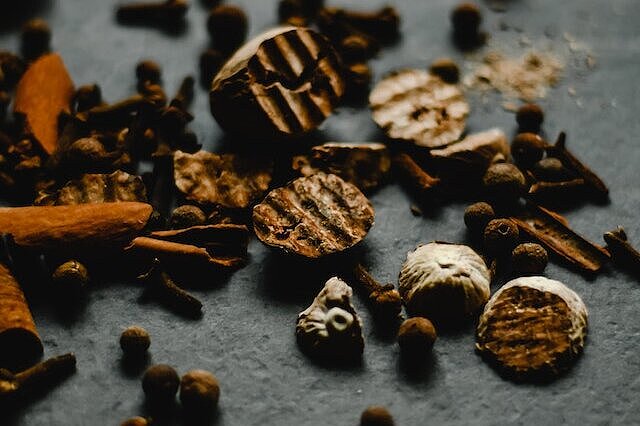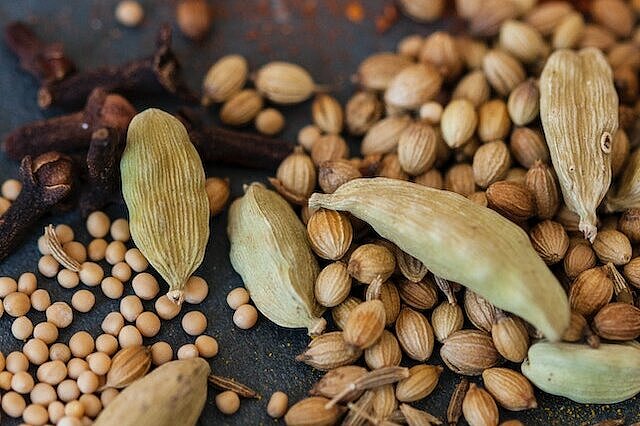Mace

What is mace?
Mace is the spice obtained from the thin, bright red seed coat of the nutmeg fruit (Myristica fragrans). After harvesting, the seed coat dries to a yellowish color and is sold either whole or ground. Mace is characterized by a similar but more delicate and slightly sweeter aroma than nutmeg itself and has many uses in the culinary world.
Potential benefits of mace for dogs
Antioxidant properties
Mace contains antioxidants that can fight free radicals in the body. These antioxidants can help reduce inflammation and promote overall well-being.
Digestive support
In small amounts, mace can have a digestive effect by stimulating the secretion of digestive enzymes and can therefore help with mild gastrointestinal discomfort.
Disadvantages and risks of mace for dogs
Toxic effects
Nutmeg and its seed coat, mace, contain substances such as myristicin, which can be toxic to dogs in higher doses. Symptoms of nutmeg or mace poisoning can include nausea, increased heart rate, confusion and seizures.
Low therapeutic range
The amount of mace that could provide health benefits without being harmful is extremely small. Determining the exact dosage is difficult and carries the risk of overdose.
Interactions with medications
Mace may interact with certain medications that a dog may be taking. This can affect the effectiveness of the medication or lead to undesirable side effects.
While mace undoubtedly offers a number of health benefits for humans, its suitability for feeding to dogs should be viewed with caution. The potential risks and toxic effects, particularly in relation to the narrow limits within which mace could be safely administered, make it a risky addition to a dog's diet.
For dog owners who have the health and welfare of their four-legged friend in mind, it is advisable to refrain from using mace in dog diets. There are numerous other, safer ways to support your dog's health through nutrition without the risk of poisoning or other negative effects.
If you notice any signs of hypersensitivity or poisoning in your dog, you should see your vet immediately. We are not a substitute for a vet, but we try to be as accurate as possible. Every dog reacts differently and we recommend you get a second opinion or consult your vet if in doubt.
Stay healthy and take good care of your four-legged friend!😊
Similar to Mace
Nutmeg is the seed of the nutmeg tree, which grows in tropical regions such as Indonesia and India. The seeds are dried and ground or grated into a spice. Nutmeg contains various ingredients that...
Cinnamon is the dried bark of various tree species from the laurel family. There are various types of cinnamon, which differ in taste, color and coumarin content. Coumarin is a natural flavoring...
Cardamom belongs to the ginger family and originally comes from South Asia. The plant has long, narrow leaves and small, yellow-green flowers. Elongated capsules containing the seeds develop from...
Allspice, also known as clove pepper, Jamaican pepper or allspice, is the dried, unripe fruit of the allspice tree (Pimenta dioica), which is native to the Caribbean, Central America and Mexico. The...



